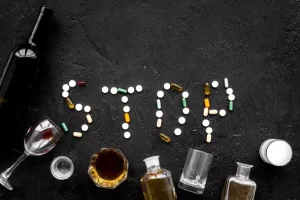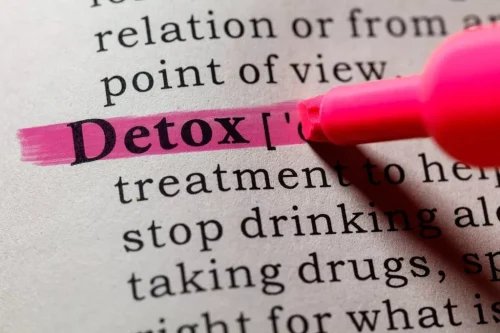Drinking and Driving: Risks, DUIs, & BAC Levels

This offense may also be called OUI (operating under the influence) or DWI (driving while impaired). Drunk drivers face jail time when they’re caught, and the financial impact is devastating. A DUI can set you back upwards of $10,000 in attorney’s fees, fines, court costs, lost time at work, higher insurance rates, car towing, and more. And, drinking and driving can result in losing your driver’s license and your car — imagine trying to explain that to your friends, family and boss.

How can this strategy result in health benefits?
- Scientists have linked frequent alcohol use to depression, anxiety, mood disorders, and self-harm (e.g., suicide attempts and cutting).
- The next time you think about getting behind the wheel after several drinks, consider the dangers of drunk driving.
- Depending on the state, factors that can lead to enhanced DUI penalties might include having minor children in the vehicle, excessive impairment, and causing injuries or property damage.
- Safe driving requires focus, coordination, good judgment, and quick reactions to the environment.
- Tough enforcement of drunk-driving laws has been a major factor in reducing drunk-driving deaths since the 1980s.
A trained counselor will evaluate your pattern of alcohol consumption to determine if you have an alcohol use disorder. Typically, the evaluator will ask you a series of questions about how alcohol affects your life. In all states, your sentence will include the loss of driving privileges for a period of time, even for a first-time DUI conviction.
Policies, Rights, and Legal
In 2016, at least 10,497 people are known to have died in alcohol-impaired traffic crashes. This astonishing figure accounts for 28% of all traffic fatalities that year. Among drivers with over the legal BAC in their system in 2016, 27 percent were between the ages of 25 and 35. In the same study, 25 percent of fatal motorcycle accidents involved drivers who were over the legal alcohol limit.
Driving After Drinking
- Impaired hand-eye coordination causes drivers to struggle to put their keys in the ignition, swerve on the road, and have trouble with steering.
- In the DOT study, researchers interviewed 581 people who admitted to drinking and driving and asked them about the decisions that led to the choice to get behind the wheel.
- Other states prohibit underage drivers from operating a vehicle with any measurable amount of alcohol in their system.
- Driving under the influence of alcohol not only poses a threat to your safety and the safety of others, but it can also have legal consequences.
- In 2022, among children (14 and younger) killed in motor vehicle crashes, 25% were killed in drunk-driving crashes.
An effective road safety transport policy should be in place to address drink–driving, together with road safety measures to reduce the severity and risk of drink–driving crashes. Such measures might, for instance, address infrastructure and speed limits. NHTSA demonstrates its commitment to eliminating drunk driving through research, public awareness campaigns, and state safety grant programs.
In 2016, over one million drivers were arrested for driving under the influence (DUI). Driving with a blood alcohol concentration (BAC) of 0.08 grams of alcohol per deciliter (g/dL) or higher is illegal in all parts of the country. And any amount consequences of driving drunk include: of booze detected for a driver under age 21 in the United States is considered illegal. The underage DUI laws of many states—including Washington, South Carolina, and Colorado—prohibit the operation of a vehicle with a BAC of .02% or more.
Options and Alternatives for DUI Offenders
Car crashes are a leading cause of death for teens, and almost a third of young drivers killed in fatal crashes involved underage drinking. In 2022, 30% of young drivers 15 to 20 years old who were killed in crashes had BACs of .01 g/dL or higher. It is illegal in all 50 states, the District of Columbia, and Puerto Rico to drive with a blood alcohol content (BAC) level of 0.08 or higher.
How Many Overall Traffic Fatalities Involve Drunk Drivers?
If you are convicted of a DWI or DUI offense, your insurance rates will likely increase dramatically. According to Forbes Advisor, car insurance rates go up 70% on average after you have had a DUI. Additionally, you may need to obtain an SR-22 document to verify you have purchased auto liability insurance. The penalties that accompany a DUI conviction vary from state to state.

Penalties Underage DUI Offenders Face
- A person may feel happy and relaxed, but they are likely to make poor decisions.
- However, during holiday periods the frequency of enforcement and the visibility of media campaigns can be increased.
- A DUI based on BAC level is often called a «per se DUI.» Some states also have per se limits on the concentration of certain drugs and controlled substances in the driver’s system.
- Keep fellow drivers, passengers, and pedestrians safe by getting a ride from a sober driver or staying put.
- Then it passes into the bloodstream where it accumulates until it is metabolized by the liver.
Just one drink before driving can put you and others in danger, because alcohol impairs thinking, reasoning and muscle coordination. A DUI can set you back, on average, $10,000, and there could be a crash — people could get hurt or killed. Persons who serve alcoholic beverages are also stakeholders to the extent that they should be responsible for not serving excess alcohol to drivers. The drug-impaired driving fact sheet provides an overview of drug-impaired driving.

Publications
Alcohol consumption impairs the body’s ability to respond quickly. This slows down reaction time, increasing the risk of car accidents as you cannot react as fast as you would without alcohol in your system. For instance, if another driver cuts you off suddenly, you may be more likely to hit them because of impaired reaction time, making it difficult to think and respond fast enough to hit the brakes. According to Science Daily, even small amounts of alcohol can slow down reaction time enough to make driving dangerous.


